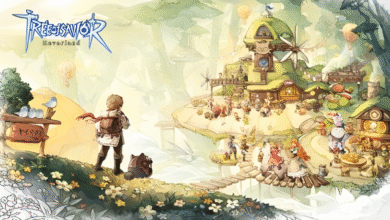All The Fallen Booru: A Comprehensive Exploration of Its Legacy and Impact

In the vast expanse of online communities, few have left as profound an impact as All the Fallen Booru (ATF Booru). Emerging from the early 2010s, this platform carved a niche for itself by offering a unique blend of artistic expression, community engagement, and a distinctive thematic focus. This article delves into the intricacies of ATF Booru, exploring its features, community dynamics, challenges, and the reasons behind its eventual decline.
What is All the Fallen Booru?
All the Fallen Booru was an online image repository that primarily focused on user-generated content, particularly artwork related to anime and manga. The platform allowed users to upload, share, and categorize their art, making it a decentralized gallery of sorts. One of the defining features of booru-style websites is their tagging system, which enables users to easily search for specific types of content.
History and Evolution
Launched in the early 2010s, All the Fallen Booru began as a small community project but quickly gained traction among art enthusiasts. Its user-friendly design and robust tagging system attracted both artists and art lovers, allowing for seamless sharing and discovery of artwork.
Over the years, All the Fallen Booru amassed a vast collection of artwork, with millions of images and thousands of active users. According to recent statistics, the platform experienced an average of over 500,000 visits per month, showcasing its popularity and relevance in the art community.
Core Features of ATF Booru
ATF Booru boasted several features that set it apart from other similar platforms:
-
Extensive Image Collection: The platform hosted a vast collection of artwork, including digital illustrations, fan art, and sketches. This extensive collection ensured that users could find unique and inspiring artwork across various genres.
-
Powerful Tagging System: One of the standout features of ATF Booru was its robust and well-organized tagging system. Tags were used to categorize images according to different attributes, such as the character featured, the type of artwork, the style, and even the mood or setting. The use of these tags made the website highly navigable, allowing users to easily search for particular images or narrow down their search using advanced filters.
-
User-Submitted Content: As a platform built for creators and art lovers, ATF Booru encouraged user submissions. Artists from around the world could upload their own artwork to share with the community. This feature gave creators the ability to showcase their work to a broader audience and receive feedback and recognition from other users.
-
Community Engagement and Feedback: ATF Booru promoted interaction within its community by offering features such as comments and ratings, allowing users to leave feedback on images. This sense of community engagement was one of the reasons why the site was so popular among both creators and fans.
Thematic Focus: Fallen Angels and Dark Aesthetics
While many booru websites cover a vast range of topics, ATF Booru’s specialized focus on fallen angels and dark aesthetics set it apart. This unique niche attracted a dedicated user base and resulted in a rich collection of themed art.
The platform’s thematic focus resonated with artists and fans who appreciated the exploration of complex themes such as redemption, loss, and transformation. The recurring motifs of wings, halos, and celestial imagery intertwined with darker elements created a distinctive visual language that defined the ATF Booru community.
Community Engagement and Interaction
ATF Booru was more than just an image-sharing platform; it was a vibrant community where artists and fans could connect, collaborate, and grow together. The platform offered various avenues for engagement:
-
Comments and Feedback: Users could leave comments on artworks, providing constructive criticism, praise, or engaging in discussions about the piece.
-
Art Challenges and Contests: The booru often hosted art challenges and contests, encouraging artists to push their creative boundaries. These events were a great way for members to showcase their talents and gain recognition within the community.
-
Collaborations and Projects: The collaborative nature of the community led to numerous joint projects, fan art series, and group discussions, fostering a sense of camaraderie among members.
Challenges Faced by ATF Booru
Despite its success, ATF Booru faced several challenges that impacted its sustainability:
-
Server and Maintenance Costs: Running a platform that hosts a large volume of user-uploaded content requires significant resources for storage, security, and ongoing maintenance. Without a steady stream of financial support or volunteers to manage the platform, sustaining the site became increasingly difficult.
-
Legal and Copyright Issues: Hosting fan art and derivative works often led to legal challenges, particularly concerning copyright laws. The platform had to navigate these complexities to avoid potential legal repercussions.
-
Competition from Other Platforms: The emergence of other online art communities and social platforms drew users away from niche booru sites. Platforms like DeviantArt, Tumblr, and Instagram offered more features and broader audiences, leading to a decline in ATF Booru’s user base.
The Decline and Closure of ATF Booru
The combination of the challenges mentioned above contributed to the decline and eventual closure of ATF Booru. The platform struggled to maintain its infrastructure, and user engagement dwindled as members migrated to other platforms. Despite efforts to revitalize the community, ATF Booru ceased operations, marking the end of an era for its dedicated user base.
Legacy and Impact on Online Art Communities
The closure of ATF Booru represented a significant loss for the online art community. The platform had served as a vital archive of community history, capturing not only the shared artistic expressions but also the interactions, discussions, and evolving dynamics within these online groups. The loss of ATF Booru meant the disappearance of a unique cultural record reflecting the dynamic interplay between creators, fans, and the platform itself.
Moreover, ATF Booru contributed to the evolution of digital aesthetics and online visual culture. The shared use of the platform contributed to the development of particular stylistic preferences and an evolving language of visual communication. Its absence diminishes the potential for understanding these historical contexts and the evolution of online art communities.
Frequently Asked Questions (FAQs)
1. What was the primary focus of ATF Booru?
ATF Booru primarily focused on user-generated artwork related to anime and manga, with a distinctive thematic emphasis on fallen angels and dark aesthetics.
2. How did ATF Booru differ from other booru platforms?
While many booru websites covered a wide range of topics, ATF Booru stood out due to its niche thematic focus on darker themes such as fallen angels, loss, and emotional transformation. Its community-driven features and strong tagging system also gave it a unique identity among similar platforms.
3. Why did All the Fallen Booru shut down?
The platform faced multiple challenges, including rising server and maintenance costs, legal issues related to copyright and user content, and increased competition from larger, more resourceful platforms like Twitter, DeviantArt, and Pixiv. These factors collectively led to decreased user activity and the eventual shutdown.
4. Are there any alternatives to ATF Booru?
Yes, several platforms offer similar functionalities:
-
Danbooru: One of the oldest and most feature-rich booru-style sites.
-
Gelbooru: Popular for its extensive archive and tagging system.
-
e621: Focuses on furry-themed art but uses a similar booru engine.
-
Pixiv: A broader platform popular in Japan, known for high-quality illustrations and professional artist tools.
5. Can I still access content from ATF Booru?
As of its shutdown, the original ATF Booru is no longer accessible. Some of its content may be archived by users or mirror sites, but these are unofficial and may not have full coverage of the original database.
Comparison Table: ATF Booru vs. Other Popular Imageboards
| Feature | All the Fallen Booru | Danbooru | Gelbooru | Pixiv |
|---|---|---|---|---|
| Thematic Focus | Dark/Fallen themes | General anime | General anime | Professional art |
| Tagging System | Advanced | Advanced | Moderate | Limited |
| Community Engagement | High | Moderate | Low | High |
| Image Moderation | Community-driven | Admin/mods | Community | Strict |
| User Submissions | Open | Account-based | Open | Account-based |
| Legal Challenges | Moderate | High | Moderate | Low |
Timeline: Key Events in ATF Booru’s History
| Year | Milestone |
|---|---|
| 2012 | Platform launches with a small user base |
| 2014 | Surge in popularity due to unique themes and community art |
| 2016 | First major server downtime due to resource strain |
| 2018 | Legal scrutiny leads to revised content guidelines |
| 2021 | User engagement drops as alternatives gain popularity |
| 2023 | Site goes offline; users migrate to alternative platforms |
All the Fallen Booru was more than just an art-sharing website it was a digital sanctuary for artists and fans captivated by the dark, the emotional, and the transcendent. Its community, aesthetics, and robust infrastructure for content organization made it a pillar in niche online art communities.
Though its time has passed, its impact continues through the works of its artists and the evolution of similar platforms. It stands as a reminder of what creative freedom and shared thematic vision can achieve in an online space.



